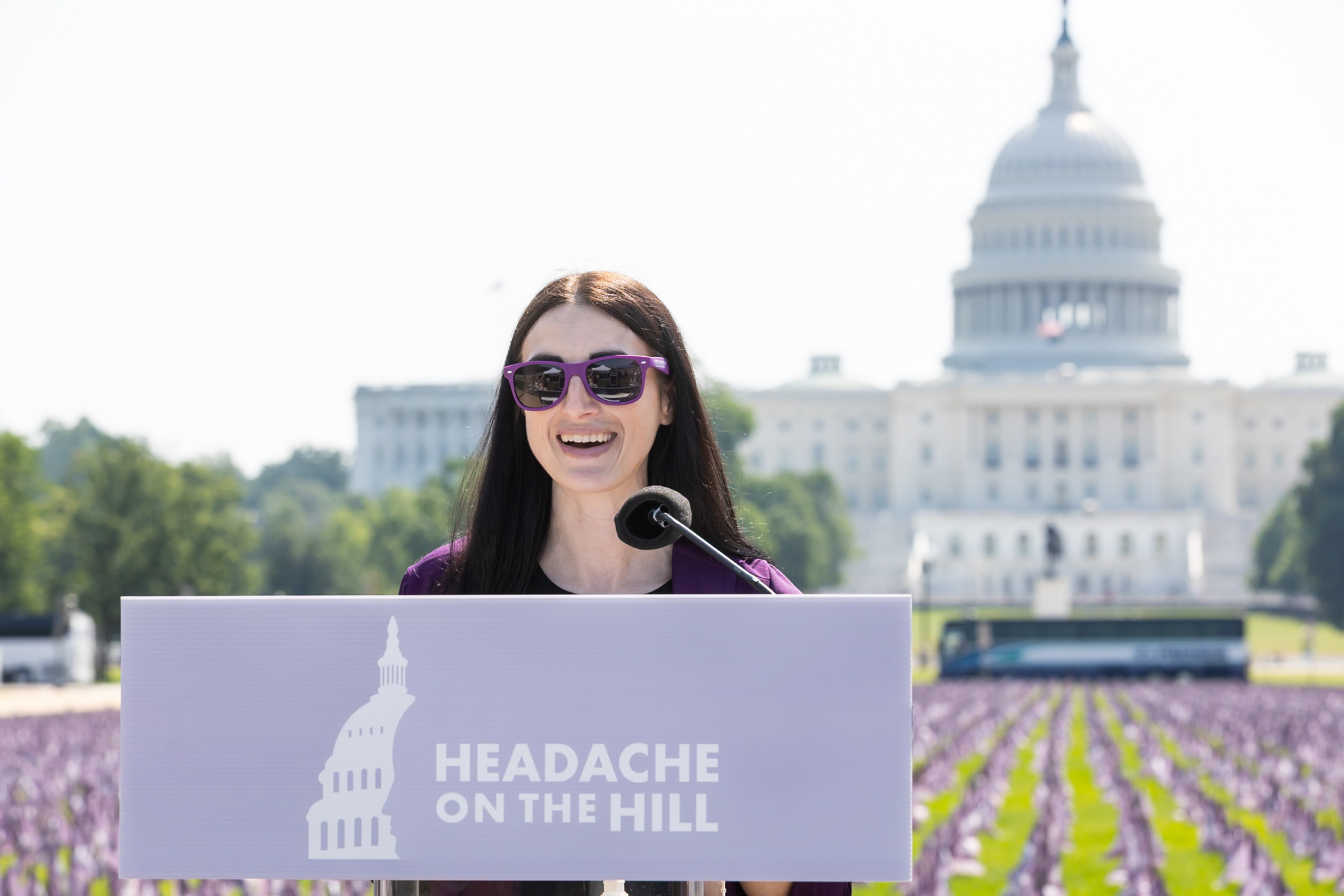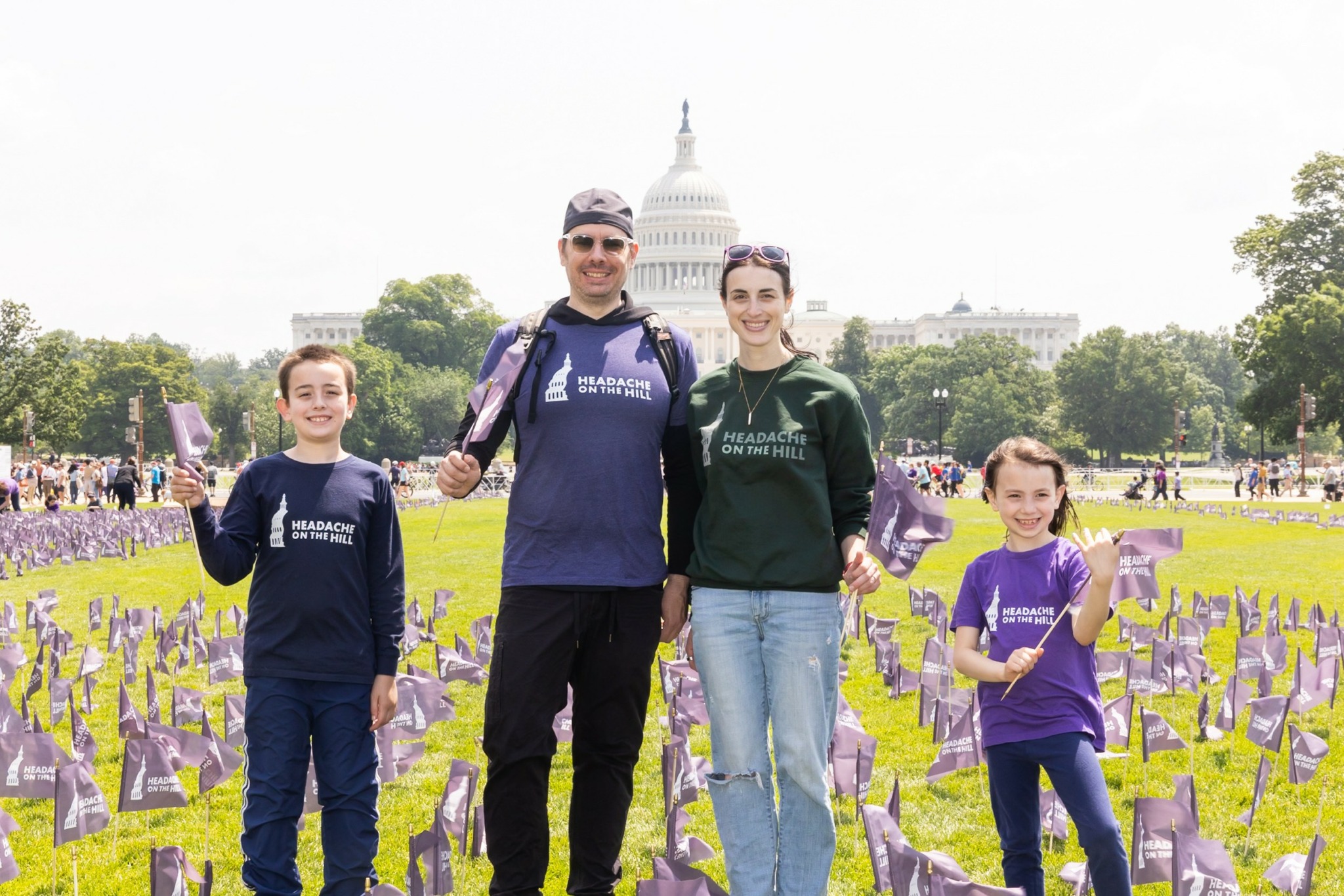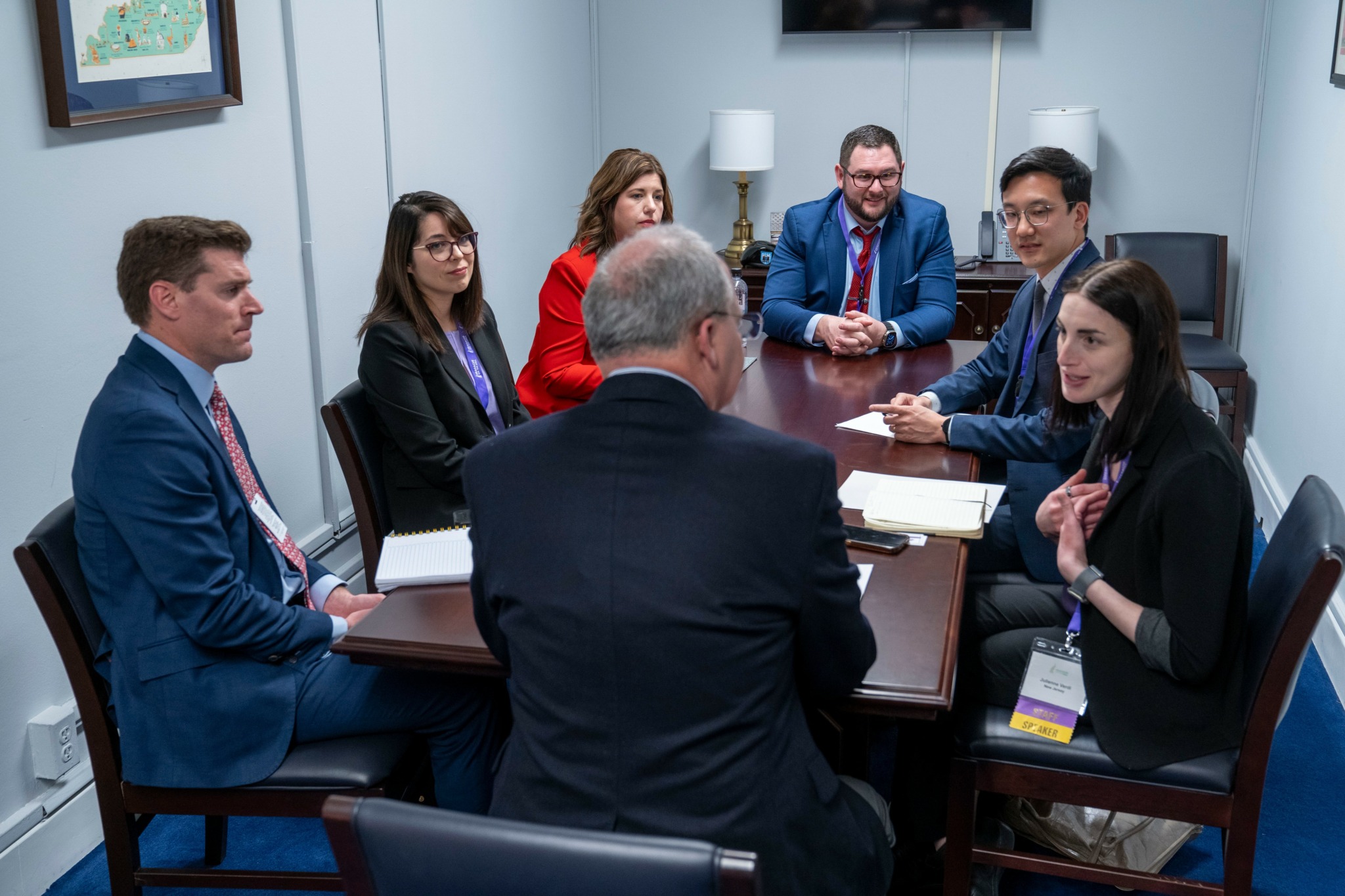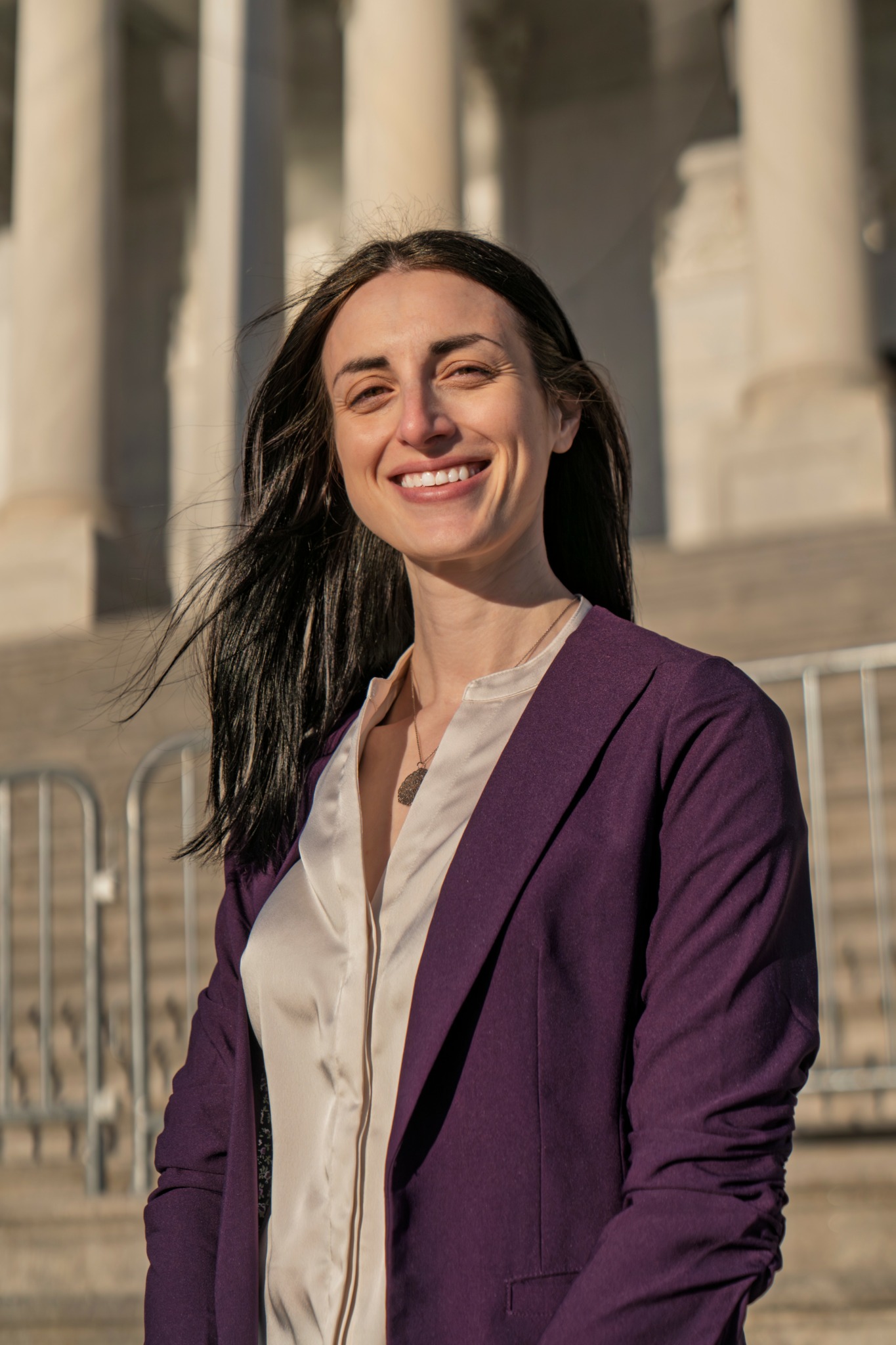We were lucky to catch up with Julienne Verdi recently and have shared our conversation below.
Julienne, thanks for taking the time to share your stories with us today Let’s talk legacy – what sort of legacy do you hope to build?
I want to be remembered as someone who helped shift power toward people who are usually left out of the conversation. My goal has always been to create meaningful opportunities for leadership and visibility for those who have been ignored, especially in healthcare, education, and civic life.
Whether it’s organizing a campaign on Capitol Hill, launching youth programming that empowers kids to share their stories, or helping patients speak directly to federal agencies, my work is about building the conditions for others to lead. As Executive Director of The Headache Alliance and the Alliance for Headache Disorders Advocacy, I work to ensure that people living with chronic health conditions are not only heard, but taken seriously in the spaces where decisions are made.
Before this role, I managed grassroots political campaigns in New York City, including helping Staten Island’s first openly gay candidate run for office and supporting a single mother in challenging an entrenched incumbent. As an attorney, I supported immigrant survivors of domestic violence in applying for legal status, and as a community organizer, I produced a short documentary on immigrant experiences in my community. Whether I’m working in policy, law, or community organizing, my focus has stayed the same: to listen, to build trust, and to help people claim the power they’ve always had.
If I’m remembered for anything, I hope it’s for helping others step into their power and for working to replace exclusion with real equity.

Julienne, love having you share your insights with us. Before we ask you more questions, maybe you can take a moment to introduce yourself to our readers who might have missed our earlier conversations?
I’m an attorney, nonprofit leader, and chronic illness advocate. I serve as the Executive Director of two national organizations: The Headache Alliance and the Alliance for Headache Disorders Advocacy (AHDA). Together, we work to improve health outcomes and quality of life for people living with disabling headache diseases like migraine and cluster headache. We do this by advancing policy change, improving access to care, and creating space for patients and caregivers to lead.
My path to this work is personal. I come from a working-class family in Staten Island, NY and was the first in my family to go to law school. I watched my mother navigate workplace discrimination, which pushed me toward law school. But it didn’t take long to realize that the legal system alone cannot fix everything. That realization led me into community organizing, where I began building local movements around climate justice, immigrant rights, and reproductive freedom.
Along the way, I became both a parent and a patient. I live with multiple chronic illnesses, including migraine, dysautonomia, and ankylosing spondylitis. These experiences changed both how I work and who I work for. I understand the toll of isolation, stigma, and dismissal in healthcare because I have lived it. I also understand what it means to advocate for someone you love. One of my four children lives with migraine, and navigating school, healthcare, and daily life through their eyes has made the work even more urgent.
Raising four young kids while leading national advocacy efforts requires constant recalibration. There are early mornings, late nights, and a lot of creative problem-solving. But my children are part of this work. They have joined me at the U.S. Capitol for Headache on the Hill and helped install our public awareness installation on the National Mall in Washington DC and in our local community. They know that speaking up matters. I hope they’re learning that systems do not change on their own. People change them. I want them to know they are never too young to use their voice, and that speaking up, especially when it feels hard, can be the first step toward systemic change.
At AHDA, we lead federal campaigns like Headache on the Hill, where patients, clinicians, researchers and caregivers go through an extensive training program on how to be effective advocates and meet with lawmakers to advocate for better care. At The Headache Alliance, we run programs like our educational Lunch & Learn series, youth civics and storytelling workshops, and the Flags for Headache National Mall, which raised national visibility for the often-invisible pain of headache disorders by planting 30,000 purple flags on the National Mall in Washington DC.
What drives me is not just passing legislation or launching programs. It is the work of connection. I want people to feel less alone. I want them to have the tools and support to challenge systems that were not built for them. Whether that comes through a workshop, a public art installation, or a conversation in a school nurse’s office, my focus is on helping people turn their stories into action.

We often hear about learning lessons – but just as important is unlearning lessons. Have you ever had to unlearn a lesson?
I had to unlearn the belief that being quiet, agreeable, and rule-following was the path to success. Growing up, I thought that if I worked hard and didn’t make waves, things would work out. But in practice, that meant staying silent when something felt wrong and making myself small to make others more comfortable.
Early in my career, I was hesitant to challenge people in power, even when I knew their decisions were harmful. I worried about being seen as ungrateful or difficult. At the same time, I often felt like an outsider. I didn’t come from wealth or influence, and I carried a lot of imposter syndrome into spaces where I didn’t see anyone like me.
But once I started speaking up; sometimes quietly, sometimes not, I was inundated with people reaching out to thank me. They had been feeling the same tension and were just waiting for someone to say it out loud. I began to see that discomfort in a space was often a signal that something needed to change, not a sign that I didn’t belong.
That perspective has shaped how I lead. In our advocacy trainings and youth programs, we teach that speaking the truth is a form of leadership, even when it’s hard. Whether you’re a child testifying about life with migraine or an adult challenging harmful insurance policies, your voice has power. You don’t need to wait for permission to use it. You’re the expert in your own story and that story holds power.

Any stories or insights that might help us understand how you’ve built such a strong reputation?
I’ve built trust by being authentic, transparent, and rooted in lived experience. I don’t separate the personal from the professional. I speak openly about living with chronic illness, about my family’s history with food insecurity, and about surviving intimate partner violence. These experiences shape how I lead and what I prioritize.
I center storytelling not as a tactic, but as the very foundation of my theory of change, building connection and power. It helps people feel less alone, and it reminds decision-makers that policy is personal. But storytelling is not where the work stops. I believe the people most impacted by injustice should be co-creators of the solutions, not just invited to share, but invited to shape what comes next.
What has helped me most is consistency. I say the same thing behind closed doors that I do in public. I do not perform empathy or allyship. I show up with it. And I stay focused on what actually creates change, even when it is uncomfortable or unpopular.
I believe in making what John Lewis called good trouble when the moment calls for it. And I hope others will see that you do not have to wait for permission to lead. You can begin exactly where you are.
Contact Info:

Image Credits
Kalin Ivanov
Seth Ventimiglia


